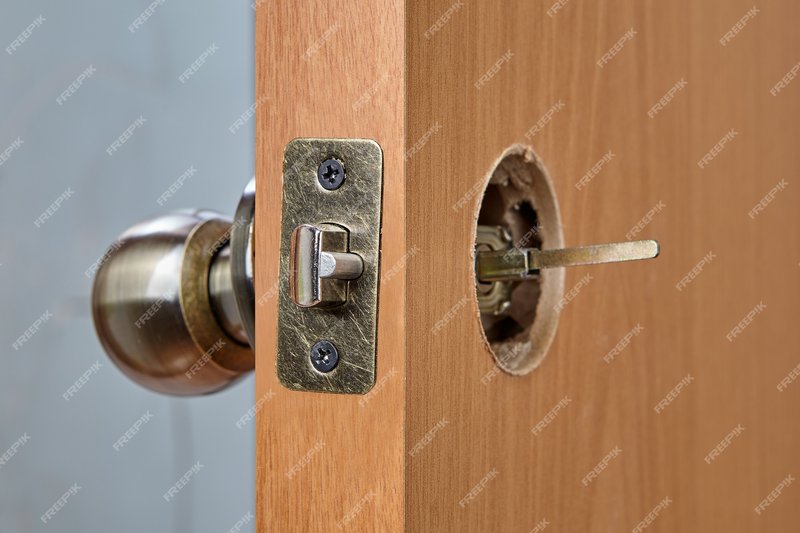
When you think about door knobs, it’s easy to overlook the internal parts. You’re probably more focused on the design or finish. However, understanding the spindle sleeve can save you a lot of time and frustration, especially if you ever face issues with your door knob. Let’s dive into what a spindle sleeve is, how it works, and why it matters in the world of door hardware.
What Is a Spindle Sleeve?
A spindle sleeve is essentially a cylindrical piece that connects the doorknob to the latch mechanism. Imagine it as the bridge between your knob and the door itself. Without this part, your knob wouldn’t have any way to engage or disengage the latch, which is the part that keeps your door locked or unlocked.
Typically made of metal or sturdy plastic, the spindle sleeve fits snugly inside the doorknob and attaches to the spindle—a rod that you can turn. When you turn the knob, the spindle rotates the sleeve, which then operates the latch. This can be a bit technical, but think of it as the hands of a clock: when you turn the knob, the spindle sleeve turns, moving the latch just like how the hands move around the clock face.
How Does the Spindle Sleeve Work?
Understanding how the spindle sleeve functions is easier if you visualize the entire setup. When you twist the doorknob, the inner spindle turns too. It engages the spindle sleeve, which then moves a latch inside the door. This is especially crucial in locked positions. If there was no spindle sleeve, you wouldn’t be able to unlock or open your door just by turning the knob!
The mechanics might seem simple, but they require a decent amount of precision. If your spindle sleeve is damaged or improperly aligned, it can lead to a door knob that feels wobbly or doesn’t turn smoothly. This connection between the spindle sleeve and the latch is what enables that satisfying click when you lock or unlock your door.
Common Issues with Spindle Sleeves
As with many door components, spindle sleeves can experience wear and tear over time. Here are a few common issues you might encounter:
- Wobbliness: If the knob feels loose, it might be due to a worn-out spindle sleeve.
- Difficulty Turning: If you struggle to turn the knob, it may be misaligned.
- No Response: Sometimes, the spindle sleeve can completely detach from the spindle, rendering the knob useless.
Here’s the thing: spotting these issues early can save you from a lot of headaches. If your door knob is acting up, don’t ignore it. Addressing these small problems can often lead to easy fixes, like tightening screws or realigning the spindle sleeve.
How to Replace a Spindle Sleeve
If you’ve determined that your spindle sleeve needs replacing, don’t worry—it’s easier than it sounds! Here’s a simple step-by-step guide to help you out:
1. Gather Your Tools: You’ll need a screwdriver, a new spindle sleeve, and possibly pliers.
2. Remove the Knob: Use your screwdriver to take off the screws on the doorknob. Gently pull the knob away from the door.
3. Replace the Spindle Sleeve: Slide the old spindle sleeve off the spindle and replace it with the new one. Ensure it fits snugly.
4. Reattach the Knob: Put the doorknob back on, aligning it with the latch and spindle. Secure it with screws.
Once you’ve completed these steps, give the knob a test turn. It should feel smooth and secure!
Choosing the Right Spindle Sleeve
When it comes to selecting a new spindle sleeve, compatibility is key. Not all spindle sleeves fit every door knob. Consider the following:
- Material: Metal sleeves tend to last longer than plastic ones. If you want durability, go for metal.
- Length: Measure your old spindle sleeve to ensure the new one matches in length.
- Brand: Stick with the same brand as your existing hardware if possible. Brands like Schlage or Kwikset often have specific parts designed for their products.
You might be wondering why it matters so much to choose the right sleeve. A proper fit means smoother operation and a longer lifespan for your door knob. Trust me, you’ll thank yourself later for making the right choice.
Why the Spindle Sleeve Matters
So, why go through the trouble of understanding the spindle sleeve? Here’s the reason: every component in your door hardware has a role to play. When the spindle sleeve functions well, it enhances the overall user experience. A well-functioning doorknob not only feels good but also enhances your home’s security.
On the flip side, if the spindle sleeve fails, it can lead to more significant issues. You might find yourself locked out or dealing with a door that won’t open. The spindle sleeve is a small part, but its impact is significant. It serves as a reminder that sometimes, it’s the little things that keep everything running smoothly.
Understanding the role of the spindle sleeve in door knobs opens up a whole new perspective on something we often take for granted. From ensuring smooth operation to playing a key role in home security, this small component is essential. Whether you’re fixing a door knob or simply curious about how things work, knowing about the spindle sleeve makes you a more informed homeowner.
Next time you walk through a door, you can appreciate the mechanics that allow that knob to turn effortlessly. And if you ever find yourself facing a stubborn door knob, you’ll know exactly where to start looking for solutions.
